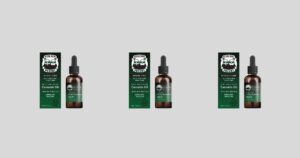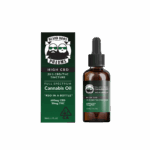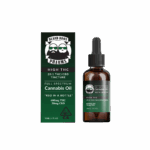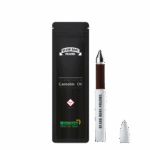For years, advocates of the “California Sober” lifestyle have claimed that swapping cocktails for cannabis helps them live healthier, more balanced lives. The idea is simple: you cut out alcohol and hard drugs but continue to use marijuana. While anecdotal success stories have flooded social media and casual conversations, hard scientific data has been harder to come by. That is, until now.
A new study has provided clinical evidence that cannabis can significantly reduce alcohol consumption, validating what many in the cannabis community have known for a long time.
Researchers at Brown University recently published findings in the American Journal of Psychiatry that challenge the old stigma that mixing substances always leads to excess. Instead, the study suggests that for heavy drinkers, cannabis might actually serve as a “brake” rather than a gas pedal when it comes to alcohol intake.
Inside the “California Sober” Experiment
To test the theory that cannabis could curb drinking, the research team, led by Professor Jane Metrik, set up a unique experiment. They didn’t just rely on surveys or self-reported habits, which can often be unreliable.
Instead, they created a controlled environment designed to look and feel exactly like a bar. This allowed them to observe real-time behaviors in a setting where people would naturally want to drink.
The study recruited 157 adults who identified as heavy drinkers and also used cannabis at least twice a week. The goal was to see how different potencies of THC would affect their desire to drink alcohol. Participants attended three separate sessions.
In each session, they were given a joint to smoke. One contained a high level of THC (7.2%), one contained a moderate level (3.1%), and the third was a placebo with virtually no THC.
After smoking, the participants were given access to their favorite alcoholic beverages for two hours. To make the choice interesting, the researchers offered a financial incentive. Participants could either drink the alcohol or receive small cash payments for every drink they declined. This setup mimicked the real-world choices people make between immediate gratification and abstaining.
High THC Leads to Lower Alcohol Intake
When participants smoked the cannabis containing THC, they drank significantly less alcohol compared to when they smoked the placebo. The reduction in drinking was directly related to the potency of the cannabis.
Those who smoked the lower dose of THC reduced their alcohol consumption by roughly 19 percent. Even more impressive was the group that smoked the higher dose of THC; they drank 27 percent less alcohol than the placebo group. This dose-dependent response suggests a clear link between the psychoactive effects of cannabis and a reduced desire to drink.
Beyond just the total volume consumed, the study found that cannabis changed the pacing of drinking. Participants who had smoked the higher-potency cannabis waited significantly longer before taking their first sip of alcohol.
They also reported feeling a lower immediate urge to drink. Rather than the cannabis making them lose control or party harder, it appeared to satisfy their craving for intoxication, leading them to moderate their alcohol intake naturally.
Validating the Substitution Effect
These findings support a concept known as the “substitution effect.” This is the theory that individuals will swap one substance for another to achieve a desired state of mind, often choosing the safer or less harmful option if it is available.
For a long time, critics argued that using cannabis alongside alcohol would only increase overall intoxication or lead to unpredictable behavior. However, Professor Metrik noted that they observed the exact opposite. Instead of fueling the fire, cannabis dampened the urge to drink.
This challenges the traditional abstinence-only model that dominates addiction treatment. For many people, the goal isn’t necessarily to be stone-cold sober but to reduce the harm caused by alcohol.
Excessive drinking is the third leading cause of preventable death in the United States, costing the economy billions and destroying countless lives. If cannabis can serve as a viable substitute that lowers alcohol intake by nearly 30 percent in a single session, it opens new doors for harm reduction strategies.
The “California Sober” approach has often been dismissed by medical purists, but this data suggests it has legs. By using cannabis to manage cravings or satisfy the need to unwind, heavy drinkers might be able to avoid the severe health consequences associated with binge drinking.
A Cannabis-Friendly Perspective on Harm Reduction
The implications of this study are massive for the cannabis community and for public health in general. It shifts the narrative of marijuana from being a “gateway drug” to potentially being an “exit drug” for alcohol. While alcohol is physically addictive and toxic to almost every organ in the body, cannabis is generally considered to have a much safer safety profile.
This study provides scientific backing for adults who have chosen to replace their evening wine or beer with a joint. It validates the personal experiences of those who find that a little THC helps them relax without the hangover, the calories, or the liver damage associated with booze. It frames cannabis not just as a recreational treat, but as a functional tool for wellness and behavioral management.
Furthermore, the study highlights that consumers are capable of self-titration. The participants didn’t mindlessly consume everything in front of them. When they were already feeling the effects of the THC, they naturally throttled back on the booze. This indicates a level of conscious or subconscious regulation that is often overlooked in discussions about substance use.
Important Considerations for the “California Sober” Approach
While the results are encouraging for those interested in a California sober lifestyle, the researchers were careful to outline the limitations of the study. The experiment looked at short-term effects over a two-hour window in a laboratory setting. It is not yet clear if these results translate perfectly to the real world over a longer period. For example, social settings might introduce different pressures that change how a person mixes substances or maintains a California Sober regimen.
Additionally, the researchers emphasized that cannabis is not risk-free. Cannabis Use Disorder is a real condition, and swapping one dependency for another is not the ultimate goal for everyone. There is also a minority of people for whom mixing substances can lead to increased impairment. Therefore, while the data is promising, it is not a blanket medical recommendation for everyone to start smoking to quit drinking.
However, for the cannabis advocate, this research is a major win. It moves the conversation forward and demands that the medical community take the therapeutic potential of THC seriously. As legalization spreads and stigma fades, we are likely to see more studies like this that explore how cannabis can be integrated into a healthy lifestyle.
















